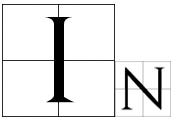The Beer Wars of the 1920s
How banning beer brought big bad trouble to Chicago
 In the 1920s, the United States (US) government banned the sale, transportation, and production of alcohol. Although this was intended to reduce crime, it had quite the opposite effect.
In the 1920s, the United States (US) government banned the sale, transportation, and production of alcohol. Although this was intended to reduce crime, it had quite the opposite effect.
Crime rates in the country increased by 24% during the prohibition period. Most of these incidents were related to bootleg sales from growing criminal organizations. They served people who wanted to drink by hook or by crook.
The ban on alcohol also negatively impacted the US economy. For example, the cost of running the Bureau of Prohibition ballooned from $50 million to over $160 million annually, adjusting for today’s rate of the dollar. Thousands of jobs were also lost overnight, with alcohol manufacturing plants and barns being forced to closed down.
This economy created the perfect conditions for criminal organizations to recruit new members and fill in a market gap. Thus, the deadly “Beer Wars” between rival gangs of the 1920s began.
Shakedown tactics
Jacob Geis, the owner of a speakeasy in central Chicago, was washing some glasses when armed gangsters busted in. They beat him senseless with the butt of their guns as he had refused to buy beer for them a week prior.
